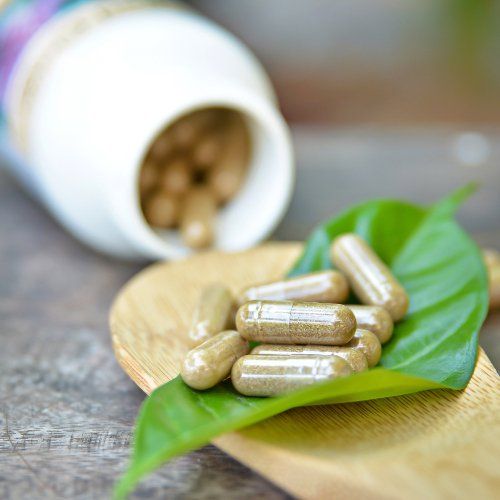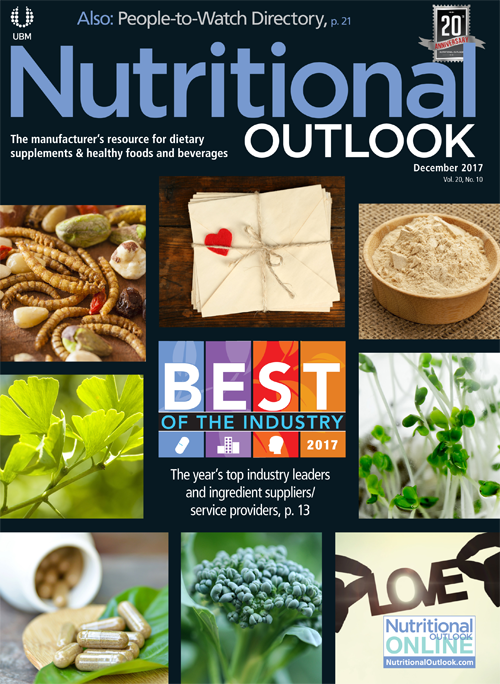Nutritional Outlook's 2017 Best of the Industry, Industry Leader: American Herbal Products Association
AHPA’s tools and efforts give industry companies new ways to ensure quality.
Photo © Shutterstock.com/totojang1977

Consensus seems in short supply everywhere except at the Silver Spring, MD, headquarters of the American Herbal Products Association (AHPA), a national trade group for the herbal products industry. AHPA’s harmony is noteworthy given the group’s membership of several hundred companies representing domestic and foreign growers, processors, manufacturers and marketers of herbal and botanical products.
Exhibit A: AHPA united members in 2006 when it crafted a comprehensive Good Agricultural and Collection Practices and Good Manufacturing Practices for Botanical Materials (GACP-GMP) guidance document; AHPA did so again mid-2016 when it updated the document amidst the fallout from the New York attorney general’s 2015 investigation into the supplement industry.
AHPA brought its membership together again in August when it translated the industry standards spelled out in the GACP-GMP guidance into a suite of assessment tools for measuring and documenting progress against them. The free tools, available for download on AHPA’s website, serve as an on-the-ground, in-the-field embodiment of botanical and herbal best practices. Just as important, the group gives companies actionable steps for living up to those values.
Within the 101-page document are checklists targeting nine areas germane to the herbal and botanical industry: 1) botanical identity and quality assessment, 2) cultivation, 3) wild collection, 4) farm standards, 5) harvest, 6) post-harvest handling, 7) processing, 8) food facility and farm facility practices and, finally, 9) an assessment tool for dietary ingredient suppliers. Operators can use them to guide and assess their procedures relative to the consensus standards.
The assessment tools also serve parties outside the herbal and botanical industry that use botanicals in their brands. Such companies can consider completion of the checklists as non-negotiable for suppliers hoping to earn their business. Again, the goal is to get everyone in the supply chain on the same page through the GACP-GMPs in terms of abiding by them and documenting a company has done so.
As Jane Wilson, AHPA’s director of program development, says, “What we’re hoping is that everyone recognizes that for a given function-say, cultivation-there’s a recognized set of best practices independent of what form you’re filling out to document those practices…As long as you’re doing those practices, it helps facilitate those interactions up the supply chain.”
AHPA made the assessments open-source (i.e., editable Word documents that users can tailor to their needs). Notes Wilson, “We’re not presenting this as a rigid set of requirements. Some very small manufacturers won’t be able to do everything in the document, while some large companies probably do quite a bit.” So, flexibility was baked into the cake.
Wilson says the assessments are a living document: “We’re still getting feedback, and we’ll definitely take it into advisement and periodically update the assessments with changes as we get more information about how people are using them.” She sees the assessments as a two-way conversation, where industry members can suggest additional practices for inclusion.
These assessments are hardly the only thing AHPA is working on. In May 2017, the group released a white paper on Good Herbal Compounding and Dispensing Practices that provides basic GMP guidance for traditional Chinese medicine, herbalist, Ayurvedic, and alternative medicine clinics that compound and dispense herbal mixtures. AHPA is also generating templates and forms to support documentation of these guidelines.
Even more recently, AHPA updated its California Proposition 65 guidance to bring the industry up to speed on potential legal liabilities related to substances that naturally occur in some herbal and botanical products sold in the Golden State.
AHPA’s building consensus among its members and providing tools to collectively keep their operations on the up and up is essential for the good of the industry and for ensuring that consumers have access to the quality products they seek.
Other 2016 winners:
Nutritional Outlook's 2017 Best of the Industry, Ingredient Supplier/Service Provider: Lycored

Prinova acquires Aplinova to further increase its footprint in Latin America
April 7th 2025Prinova has recently announced the acquisition of Brazilian ingredients distributor Aplinova, which is a provider of specialty ingredients for a range of market segments that include food, beverage, supplements, and personal care.





















